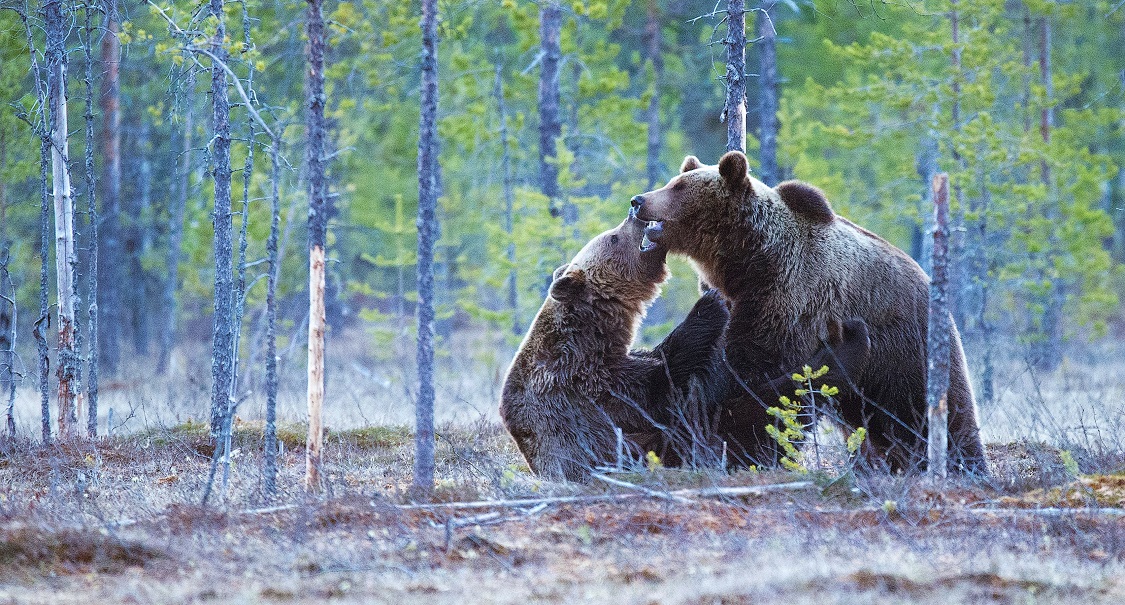How To Prevent & Survive a Bear Attack
A woman died in a rare, fatal grizzly bear encounter near Yellowstone National Park this past weekend. The area surrounding the attack was quickly closed as authorities searched for the bear according to the Montana Department of Fish, Wildlife, and Parks.
Montana FWP reported that a hiker discovered the victim’s body on the Buttermilk Trail near West Yellowstone on Saturday morning. FWP and other agencies who responded noted that the body had wounds “consistent with a bear attack,” and found tracks from an adult grizzly and at least one cub nearby. They did not find bear spray or a firearm in the vicinity of the attack.
The attack occurred close to a residential area and hiking trails, therefore authorities quickly began searching for the bear on the ground and by helicopter. A portion of the Custer Gallatin National Forest was closed as a result.
Bear attacks are rare in the United States averaging roughly two fatalities a year over the past few decades. This week’s death marks the country’s third reported incident in 2023. This prompts the need to educate hikers, climbers and campers about bear awareness.
“Vigilance is important for those who live and recreate in the outdoors,” said Quentin Kujala, chief of conservation policy for FWP. “This is a busy time of year for bears and our field staff are responding to calls in these particular areas and across the state.”
How to Safely Coexist and Protect Yourself from Bear Attacks
Encountering a bear in the wild can be a thrilling experience, but it also poses potential dangers. While bears are magnificent creatures that play a vital role in the ecosystem, it is crucial to be bear-aware and take necessary precautions to ensure both human safety and bear conservation. In this article, we will explore the importance of bear awareness, understanding bear behavior, and practical tips to protect yourself from a bear attack.

The Importance of Bear Awareness
As humans increasingly venture into bear habitats for recreational activities such as hiking, camping, and fishing, understanding bear behavior becomes essential. Being bear-aware means having the knowledge and skills to minimize the risk of bear encounters and react appropriately if you come face-to-face with one.
It’s important to remember that bears are generally shy and prefer to avoid human interactions. Bear attacks are relatively rare, but when they do occur, they are often a result of human-bear conflicts arising from improper handling of food, garbage, or surprising a bear at close range. By raising bear awareness, we can significantly reduce these conflicts and promote peaceful coexistence.
Understanding Bear Behavior
Before delving into safety tips, it is essential to understand some key aspects of bear behavior:
– Bear Species: In North America, the two most common bear species are the black bear and the grizzly/brown bear. Each species may require slightly different approaches when it comes to bear encounters.
– Defensive vs. Predatory Attacks: Bears may attack defensively to protect their cubs, territory, or themselves if they feel threatened. Defensive attacks are more common and often involve warning signs like huffing or jaw-popping. On the other hand, predatory attacks, where a bear sees a human as potential prey, are exceptionally rare.
– Body Language: Understanding a bear’s body language can provide valuable insights into its intentions. Signs of stress or discomfort may include the bear standing on its hind legs, swaying back and forth, or making woofing or growling sounds.
How To Avoid Attracting Bears
- Store garbage in an IGBC-certified bear resistant bin or other similarly resistant building or container at all times until the day of disposal.
- Avoid leaving food or smell attractants next to windows, doors or outside walls.
- Do not leave out pet food, bird feeders and bird seed or BBQ’s.
- Bears are attracted to fruit-bearing trees and bushes, gardens and compost piles. Electric fencing can be effective at deterring bears as well as routinely picking fallen and ripe fruit.
- Secure vulnerable livestock (chickens, goats, sheep) with an electric fence whenever possible.
Tips For Hiking, Camping & Biking in Bear Country
- Carry Bear Spray: Bear spray is an effective deterrent and should be carried in accessible areas, such as attached to your belt or backpack strap. Familiarize yourself with how to use it properly and be prepared to deploy it if needed.
- Travel in groups whenever possible and plan to be back to your vehicle in the daylight hours.
- Avoid carcass sites and concentrations of ravens and other scavengers.
- Watch for signs of bears such as bear scat, diggings, torn-up logs and turned over rocks, and partly consumed animal carcasses.
- Make noise, especially near streams or in thick forest where hearing and visibility is limited. This can be the key to avoiding encounters. Most bears will avoid humans when they know humans are present. Loud noise, such as banging pots and pans, using an air horn, a whistle, or shouting, is a simple, effective short-term way to deter a bear on private property.
- Never approach a bear. A bear might stand up to get a better look at whatever is bothering them. If they are highly agitated and fearful, they may bluff charge (run toward you and then stop before reaching you).
Conclusion
Bear awareness is crucial for those venturing into bear country. Understanding bear behavior and taking appropriate safety measures can significantly reduce the risk of bear encounters and promote a harmonious coexistence between humans and bears. By respecting their natural habitat, securing food, and knowing how to react during an encounter, we can protect ourselves and these magnificent creatures, ensuring that they continue to thrive in the wild for generations to come.
Thank you for reading the best mens lifestyle blog!








